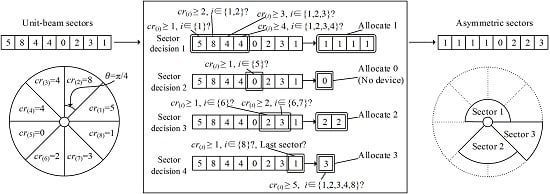Asymmetric Directional Multicast for Capillary Machine-to-Machine Using mmWave Communications
Abstract
:1. Introduction
2. System Model
2.1. Directional Antenna
2.2. Network Model
3. Design of the ADM
| Algorithm 1 Asymmetric sectorization |
|
4. Performance Evaluation
4.1. Simulation Setting and Configuration
4.2. Simulation Results
5. Conclusions
Acknowledgments
Author Contributions
Conflicts of Interest
References
- Mehmood, Y.; Görg, C.; Muehleisen, M.; Timm-Giel, A. Mobile M2M communication architectures, upcoming challenges, applications, and future directions. Eurasip J. Wirel. Comm. 2015, 250, 1–37. [Google Scholar] [CrossRef]
- Paul, A.; Rho, S.; Bharnitharan, K. Interactive scheduling for mobile multimedia service in M2M environment. Multimed. Tools Appl. 2014, 71, 235–246. [Google Scholar] [CrossRef]
- Carretero, J.; García, J.D. The Internet of things: Connecting the world. Pers. Ubiquit. Comput. 2014, 18, 445–447. [Google Scholar] [CrossRef]
- Kim, S.; Na, W. Safe data transmission architecture based on cloud for Internet of things. Wireless Pers. Commun. 2016, 86, 287–300. [Google Scholar] [CrossRef]
- Kwon, J.-H.; Chang, H.S.; Shon, T.; Jung, J.-J.; Kim, E.-J. Neighbor stability-based VANET clustering for urban vehicular environments. J. Supercomput. 2016, 72, 161–176. [Google Scholar] [CrossRef]
- Kim, T.-Y.; Kim, E.-J. Multi-hop WBAN configuration approach for wearable machine-to-machine systems. Multimed. Tools Appl. 2015. [Google Scholar] [CrossRef]
- Huang, C.F.; Lin, W.C. Data collection for multiple mobile users in wireless sensor networks. J. Supercomput. 2015. [Google Scholar] [CrossRef]
- Pandit, S.; Sarker, K.; Razzaque, M.A.; Sarkar, A.M.J. An energy-efficient multiconstrained QoS aware MAC protocol for body sensor networks. Multimed. Tools Appl. 2015, 74, 5353–5374. [Google Scholar] [CrossRef]
- ISO/IEC/IEEE International Standard for Information Technology-Telecommunications and information exchange between systems-Local and metropolitan area networks--Specific requirements-Part 11: Wireless LAN Medium Access Control (MAC) and Physical Layer (PHY) Specifications Amendment 3: Enhancements for Very High Throughput in the 60 GHz Band (adoption of IEEE Std 802.11ad-2012); IEEE: New York, NY, USA, 2012.
- Standard ECMA–387 High Rate 60 GHz PHY, MAC and HDMI PAL. (2010). Available online: http://www.ecma-international.org/publications/files/ECMA-ST/ECMA-387.pdf/ (accessed on 1 December 2015).
- IEEE Std 802.15.3c–2009, IEEE Standard for Information technology–Telecommunications and information exchange between systems–Local and metropolitan area networks–Specific requirements. Part 15.3: Wireless Medium Access Control (MAC) and Physical Layer (PHY) Specifications for High Rate Wireless Personal Area Networks (WPANs) Amendment 2: Millimeter-wave based Alternative Physical Layer Extension; IEEE: New York, NY, USA, 2009.
- Park, H.; Park, S.; Song, T.; Pack, S. An incremental multicast grouping scheme for mmWave networks with directional antennas. IEEE Commun. Lett. 2013, 17, 616–619. [Google Scholar] [CrossRef]
- Schneider, T. Ultrahigh-bitrate wireless data communications via THz-links; possibilities and challenges. J. Infrared Millim. Te. 2015, 36, 159–179. [Google Scholar] [CrossRef]
- Kim, W.; Song, T.; Pack, S. FRAS: Fair rate adaptation scheme for directional multicast in 60 GHz multi-gigabit WLANs. Wireless Pers. Commun. 2014, 77, 1007–1017. [Google Scholar] [CrossRef]
- Park, H.; Kang, C.-H. A group-aware multicast scheme in 60 GHz WLANs. KSII T. Internet Info. 2011, 5, 1028–1048. [Google Scholar]
- Wu, D.; Wang, J.; Cai, Y.; Guizani, M. Millimeter-wave multimedia communications: Challenges, methodology, and applications. IEEE Commun. Mag. 2015, 53, 232–238. [Google Scholar] [CrossRef]
- Cai, L.X.; Cai, L.; Shen, X.; Mark, J.W. REX: A randomized exclusive region based scheduling scheme for mmWave WPANs with directional antenna. IEEE Trans. Wireless Commun. 2010, 9, 113–121. [Google Scholar] [CrossRef]
- Park, H.; Park, S.; Shon, T.; Kim, E.-J. Multi-hop-based opportunistic concurrent directional transmission in 60 GHz WPANs. Multimed. Tools Appl. 2015, 74, 1627–1644. [Google Scholar] [CrossRef]
- Khatiwada, B.; Moh, S. A novel multi-channel MAC protocol for directional antennas in ad hoc networks. Wireless Pers. Commun. 2015, 80, 1095–1112. [Google Scholar] [CrossRef]
- Kwon, J.-H.; Kim, E.-J.; Kang, C.-H. CAD-MAC: Coverage adaptive directional medium access control for mmWave wireless personal area networks. In Proceedings of the 26th International Conference on Advanced Information Networking and Applications Workshops (WAINA), Fukuoka, Japan, 26–29 March 2012; pp. 751–754.
- Park, H.; Kim, E.-J. Location-oriented multiplexing transmission for capillary machine-to-machine systems. Multimed. Tools Appl. 2015. [Google Scholar] [CrossRef]
- Park, H.; Lee, C.; Lee, Y.S.; Kim, E.-J. Performance analysis for contention adaptation of M2M devices with directional antennas. J. Supercomput. 2015. [Google Scholar] [CrossRef]
- Guo, S.; Guo, M.; Leung, V.; Yu, S.; Xiang, Y. On the multicast lifetime of WANETs with multibeam antennas: Formulation, algorithms, and analysis. IEEE Trans. Comput. 2014, 63, 1988–2001. [Google Scholar] [CrossRef]
- Hou, Y.T.; Shi, Y.; Sherali, H.D.; Wieselthier, J.E. Multicast communications in ad hoc networks using directional antennas: A lifetime-centric approach. IEEE Trans. Veh. Technol. 2007, 56, 1333–1344. [Google Scholar] [CrossRef]
- Zhang, G.; Xu, Y.; Wang, X.; Tian, X.; Liu, J.; Gan, X.; Yu, H.; Qian, L. Multicast capacity for VANETs with directional antenna and delay constraint. IEEE J. Sel. Areas Commun. 2012, 30, 818–833. [Google Scholar] [CrossRef]
- Sen, S.; Ghosh, R.; Xiong, J.; Choudhury, R.R. BeamCast: Harnessing beamforming capabilities for link layer multicast. ACM SIGMOBILE Mob. Comput. Commun. Rev. 2009, 13, 34–37. [Google Scholar] [CrossRef]
- Pyo, C.W.; Harada, H. Throughput analysis and improvement of hybrid multiple access in IEEE 802.15. 3c mm-wave WPAN. IEEE J. Sel. Area Comm. 2009, 27, 1414–1424. [Google Scholar]
- Kim, J.; Mohaisen, A.; Hong, S.-N. Interference impacts on 60 GHz real-time online video streaming in wireless smart tv platforms. Multimed. Tools Appl. 2015, 74, 8613–8629. [Google Scholar] [CrossRef]
- Kim, T.; Kim, E.-J. View pattern-based adaptive streaming strategy for mobile content delivery services. Multimed. Tools Appl. 2015. [Google Scholar] [CrossRef]
- Choi, M.; Lee, G.; Jin, S.; Koo, J.; Kim, B.; Choi, S. Link adaptation for high-quality uncompressed video streaming in 60 GHz wireless networks. IEEE T. Multimedia 2013, 18, 627–642. [Google Scholar] [CrossRef]
- Scott-Hayward, S.; Garcia-Palacios, E. High definition video in IEEE 802.15.3c mm-Wave wireless personal area networks. In Proceedings of the 36th International Conference on Local Computer Networks (LCN), Bonn, UK, 4–7 October 2011; pp. 93–100.
- Singh, H.; Oh, J.; Kweon, C.; Qin, X.; Shao, H.R.; Ngo, C. A 60 GHz wireless network for enabling uncompressed video communication. IEEE Commun. Mag. 2008, 46, 71–78. [Google Scholar] [CrossRef]
- Pandian, M.B.; Sichitiu, M.L.; Dai, H. Optimal resource allocation in random access cooperative cognitive radio networks. IEEE Trans. Mobile Comput. 2014, 14, 1245–1258. [Google Scholar] [CrossRef]
- Babu, A.V.; Jacob, L. Fairness analysis of IEEE 802.11 multirate wireless LANs. IEEE T. Veh. Technol. 2007, 56, 3073–3088. [Google Scholar] [CrossRef]
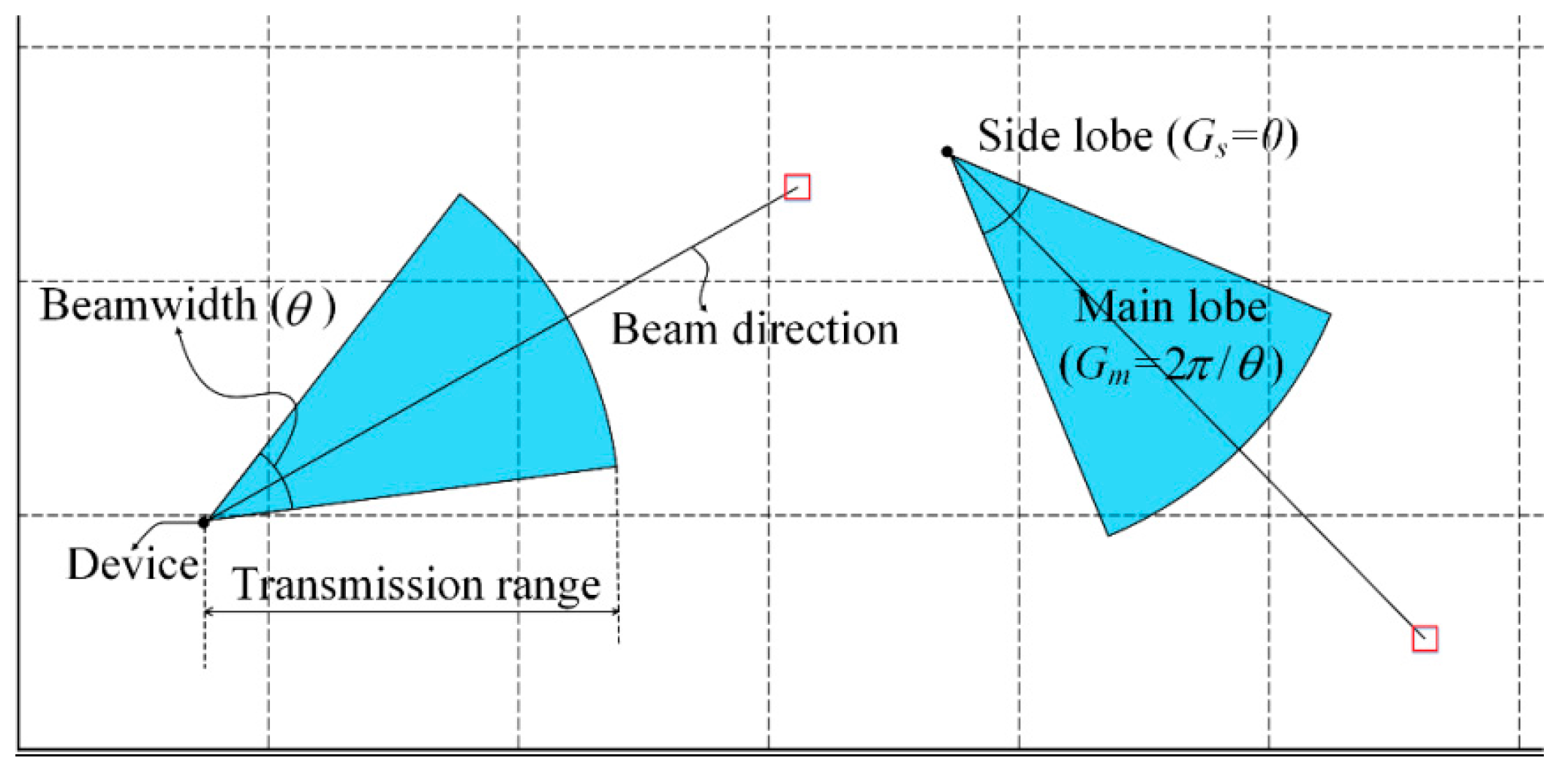
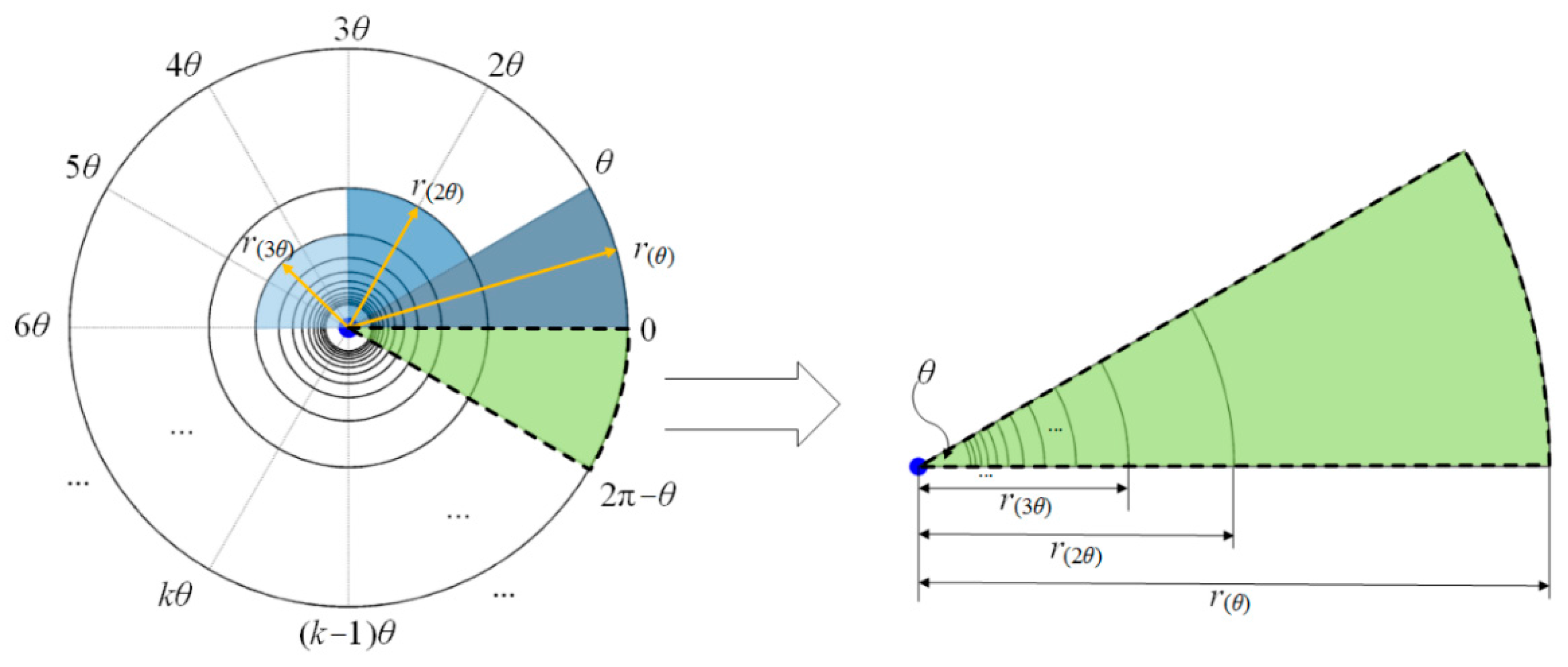
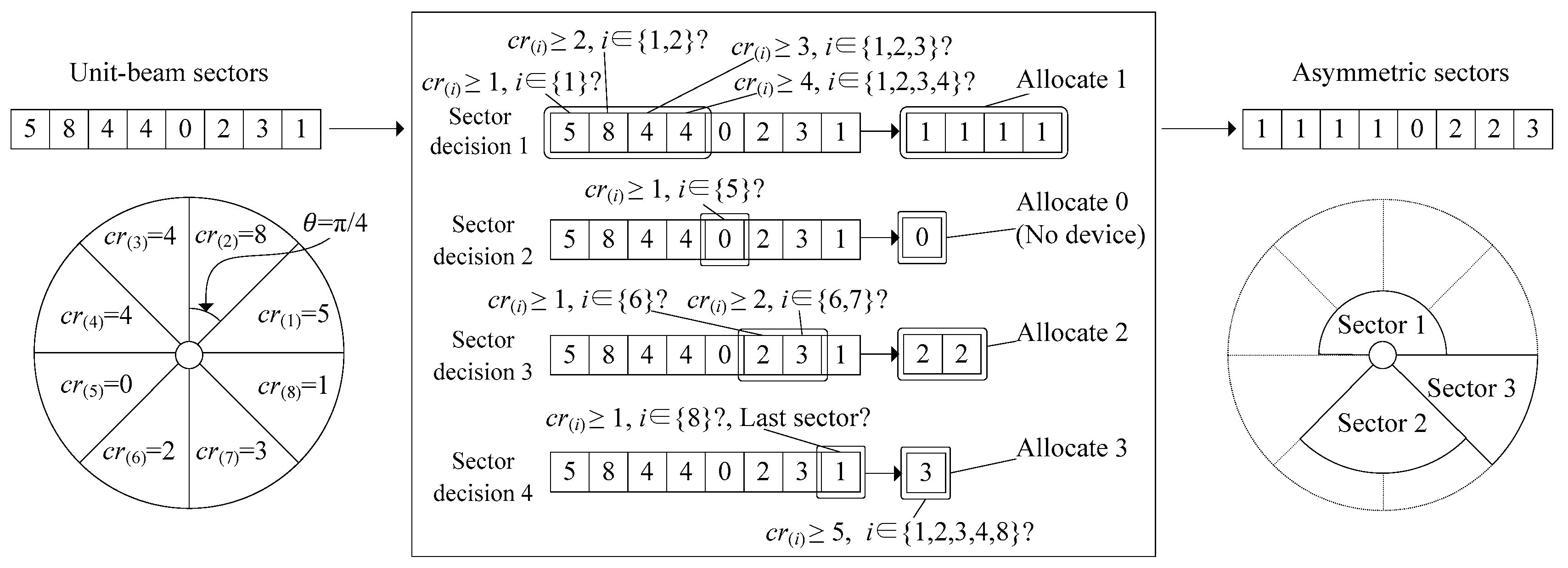







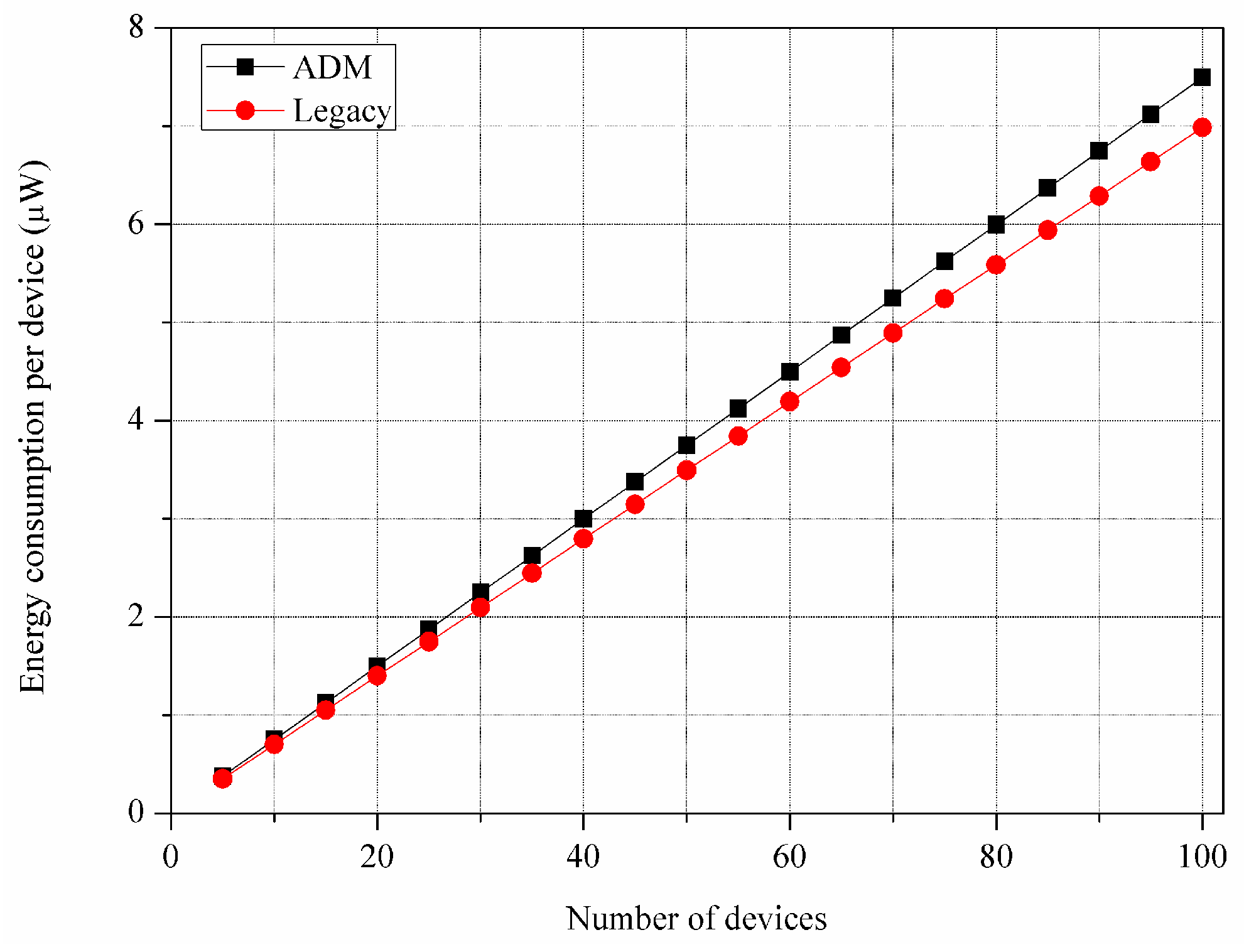

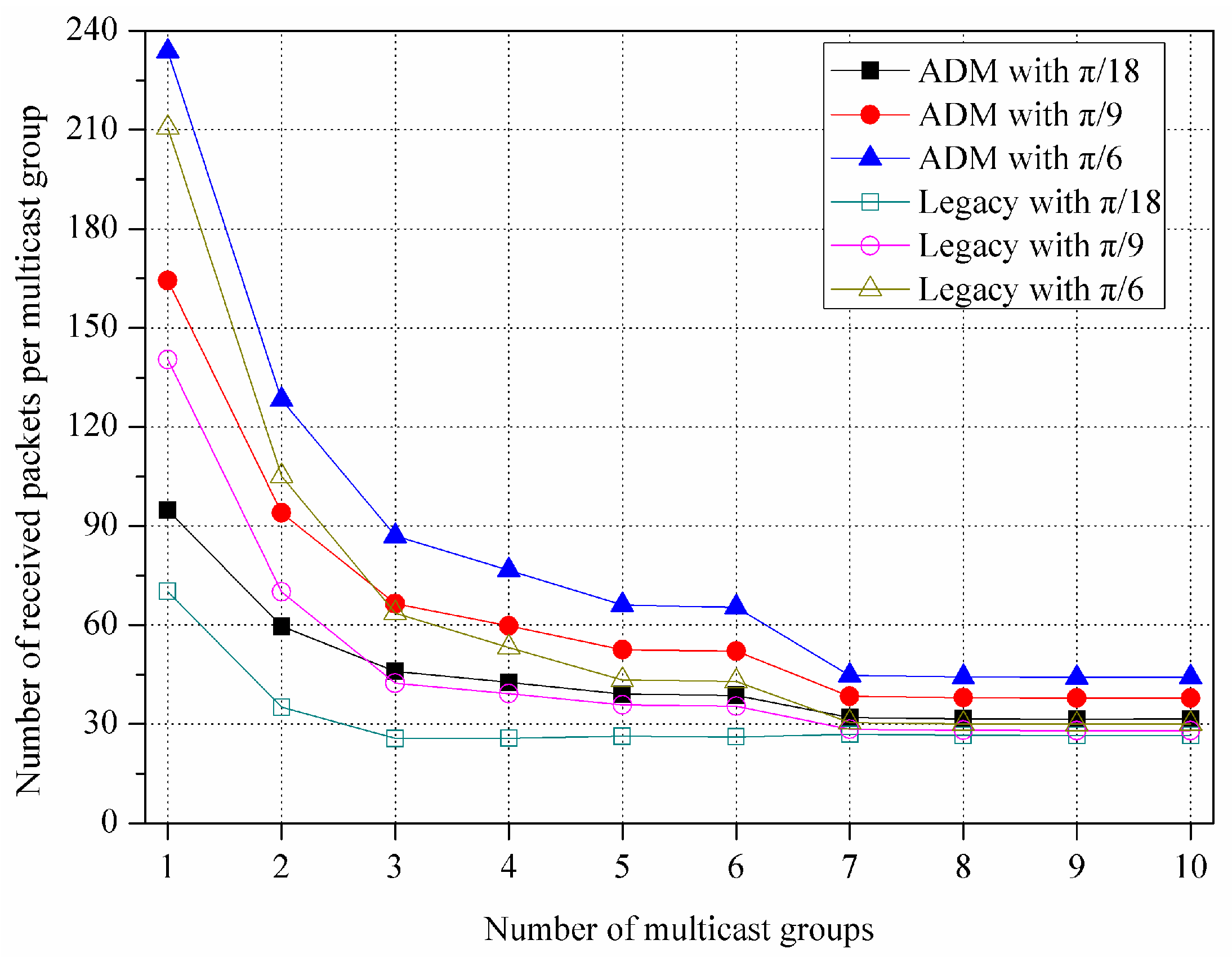

| MCS | Sensitivity (dB) | BeamWidth (rad) | Maximum Transmission Range (m) |
|---|---|---|---|
| Data rate: 412 Mbps Modulation: BPSK Spreading factor: 4 FEC type: RS(255,239) | -61 | 60.47 | |
| 30.23 | |||
| 15.11 | |||
| 10.07 | |||
| 3.35 | |||
| Data rate: 825 Mbps Modulation: BPSK Spreading factor: 2 FEC type: RS(255,239) | -58 | 42.81 | |
| 21.40 | |||
| 14.27 | |||
| 7.13 | |||
| 2.37 | |||
| Data rate: 1650 Mbps Modulation: BPSK Spreading factor: 1 FEC type: RS(255,239) | -55 | 30.30 | |
| 15.15 | |||
| 10.10 | |||
| 5.05 | |||
| 1.68 |
| MCS Class | MCS ID | Data Rate (Mbps) |
|---|---|---|
| Class 1 | 0 | 25.8 |
| 1 | 412 | |
| 2 | 825 | |
| 3 | 1650 | |
| 4 | 1320 | |
| 5 | 440 | |
| 6 | 880 | |
| Class 2 | 7 | 1760 |
| 8 | 2640 | |
| 9 | 3080 | |
| 10 | 3290 | |
| 11 | 3300 | |
| Class 3 | 12 | 3960 |
| 13 | 5280 |
| Parameter | Value | Parameter | Value |
|---|---|---|---|
| PHY | IEEE 802.15.3c | Antenna | Sectored antenna |
| Traffic application | CBR | Slot time | 20 μs |
| Beamwidth of unit-beam sector | SIFS | 2.5 μs | |
| MG1 packet size | 2 Kbytes | Preamble duration | 8.157 μs |
| MG2 packet size | 3 Kbytes | Transmission power | 20 mW |
| MG3 packet size | 4 Kbytes | Receive power | 15 mW |
| Data rate | 1.65 Gbps | Idle power | 10 mW |
| Sensitivity | -55 dBm | Guard time | 0.02 μs |
| Control Overhead | ADM | Legacy |
|---|---|---|
| Average energy consumption (μW) | 117.01 | 115.98 |
| Average transmission time (μs) | 11.59 | 11.49 |
© 2016 by the authors; licensee MDPI, Basel, Switzerland. This article is an open access article distributed under the terms and conditions of the Creative Commons by Attribution (CC-BY) license (http://creativecommons.org/licenses/by/4.0/).
Share and Cite
Kwon, J.-H.; Kim, E.-J. Asymmetric Directional Multicast for Capillary Machine-to-Machine Using mmWave Communications. Sensors 2016, 16, 515. https://doi.org/10.3390/s16040515
Kwon J-H, Kim E-J. Asymmetric Directional Multicast for Capillary Machine-to-Machine Using mmWave Communications. Sensors. 2016; 16(4):515. https://doi.org/10.3390/s16040515
Chicago/Turabian StyleKwon, Jung-Hyok, and Eui-Jik Kim. 2016. "Asymmetric Directional Multicast for Capillary Machine-to-Machine Using mmWave Communications" Sensors 16, no. 4: 515. https://doi.org/10.3390/s16040515





